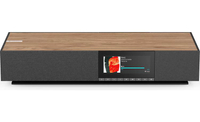This all-in-one audio system just replaced every speaker in my living room
The Cambridge Audio Evo One offers room-filling sound without the cable clutter
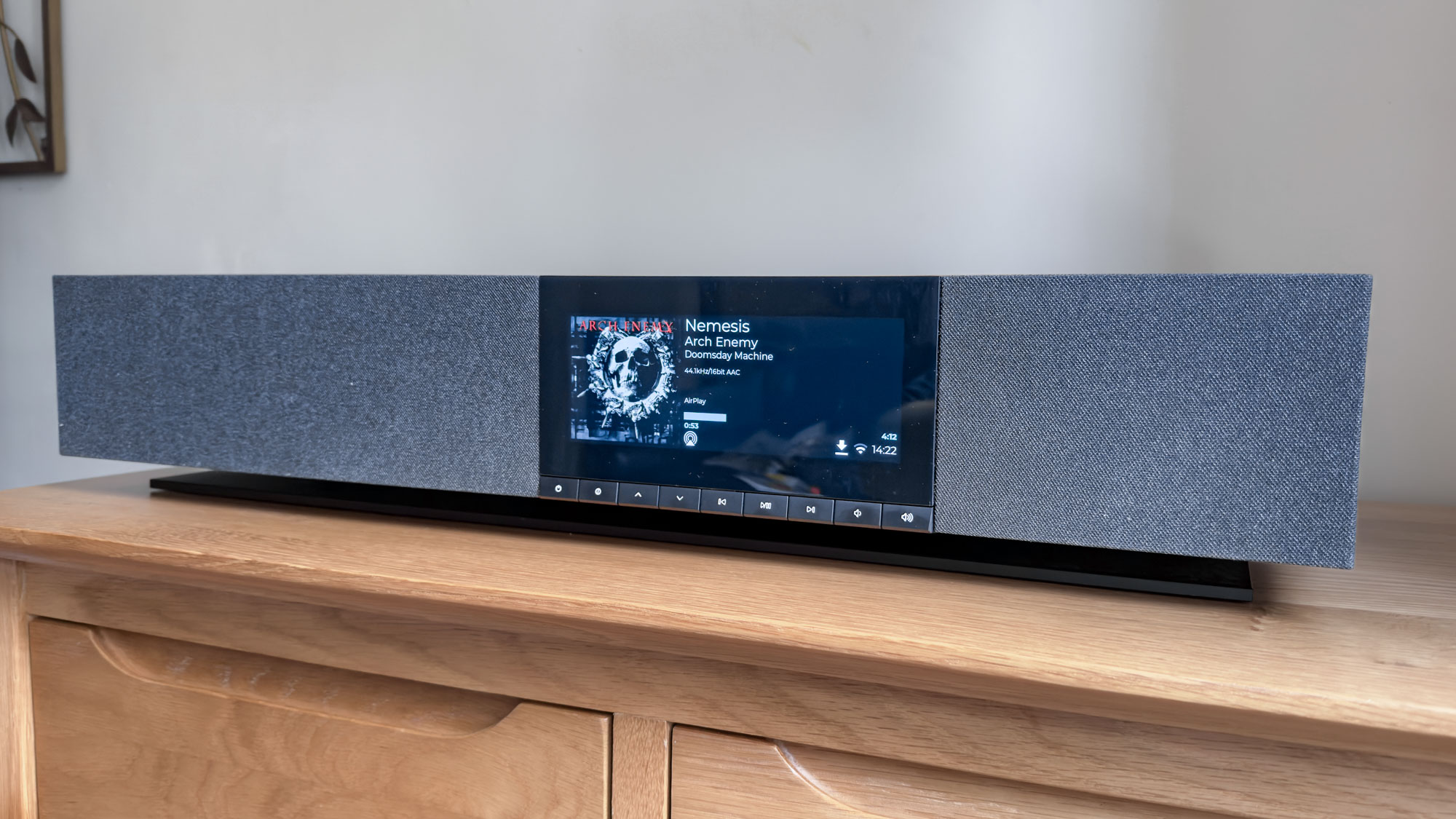
Traditionally, my living room has been loaded from top to bottom with different audio equipment. There’s a Sonos Era 300 in the corner for Spatial Audio duties; a soundbar nestled under my TV for movies; and a pair of floor-standing speakers for dedicated music-listening duties. I have more speakers in my living room than most people have in their whole house.
Until now.
In an attempt to replace everything, I set up the Cambridge Audio Evo One, a singular speaker system finished with walnut wood and equipped with a 7-inch touchscreen. It’s a music streaming all-in-one, connecting to your Wi-Fi and playing your music from Spotify, Tidal, or Apple Music. It doubles up as a Bluetooth speaker as well thanks to a Bluetooth 5.3 connection, and it connects with the Cambridge Audio Streammagic app for easy customization and use.
How did the Evo One do in its attempt to dethrone an entire home audio armada? It fared a lot better than you might think.
Clearing up the audio clutter
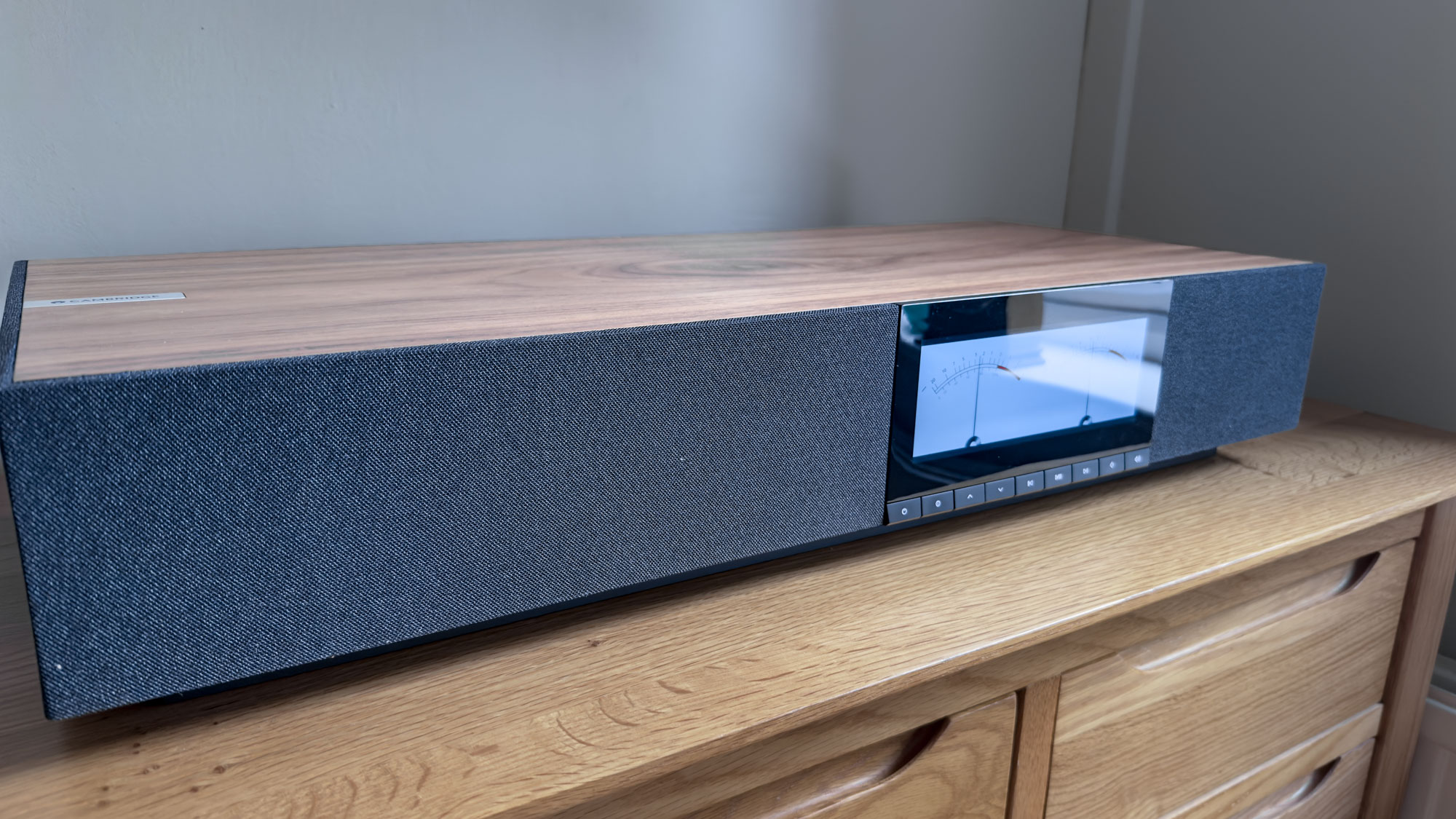
Beyond the wireless connectivity options, the Evo One has a massive number of ports on the back: There’s an HDMI-eArc connector on the back so that it can do the job of my soundbar. It has a built-in Phono pre-amp so that you can hook up your turntable without a separate device. There’s an optical input so that you can connect digital devices, alongside an Ethernet port for rock-solid internet, and an RCA port for legacy devices like CD players or tape decks. Finally, there’s a USB port in case you’ve got an HDD filled with hi-res music files and want to listen locally rather than over the Wi-Fi.
Controlling it is easy. The app is simple and it lets you turn the speaker on and off, change different settings like EQ, power modes, and more. It’s AirPlay-compliant so you can play directly from your streaming app of choice, but it also works with Tidal Connect for a higher-resolution connection. There are controls on the front of the Evo One to control it as well, including play/pause, forward and backward skip buttons, and buttons to turn the volume up and down.
It’s a very simple device to use, and the fact that it brings everything together is a big bonus of the fragmented controls I had to use with my multiple solutions.
Sign up to get the BEST of Tom's Guide direct to your inbox.
Get instant access to breaking news, the hottest reviews, great deals and helpful tips.
So it’s replaced my soundbar, and my Sonos Era 300 streaming speaker thanks to its incredible amount of ports and connections. But how has it managed to replace my dedicated listening, floor-standing speakers? By sounding really, really good.
Cambridge Audio Evo One: $1,499 @ Crutchfield
The Cambridge Audio Evo One is a singular speaker system that comes with a 7-inch touchscreen, tons of ports, and excellent sound quality while also doubling as a Bluetooth speaker thanks to a Bluetooth 5.3 connection. Even with its high price tag, it's one of the few all-in-one speaker systems worth buying, as it combines the sound quality you'd expect from a multi-channel bespoke system with easy-to-use controls.
Unbeatable sound
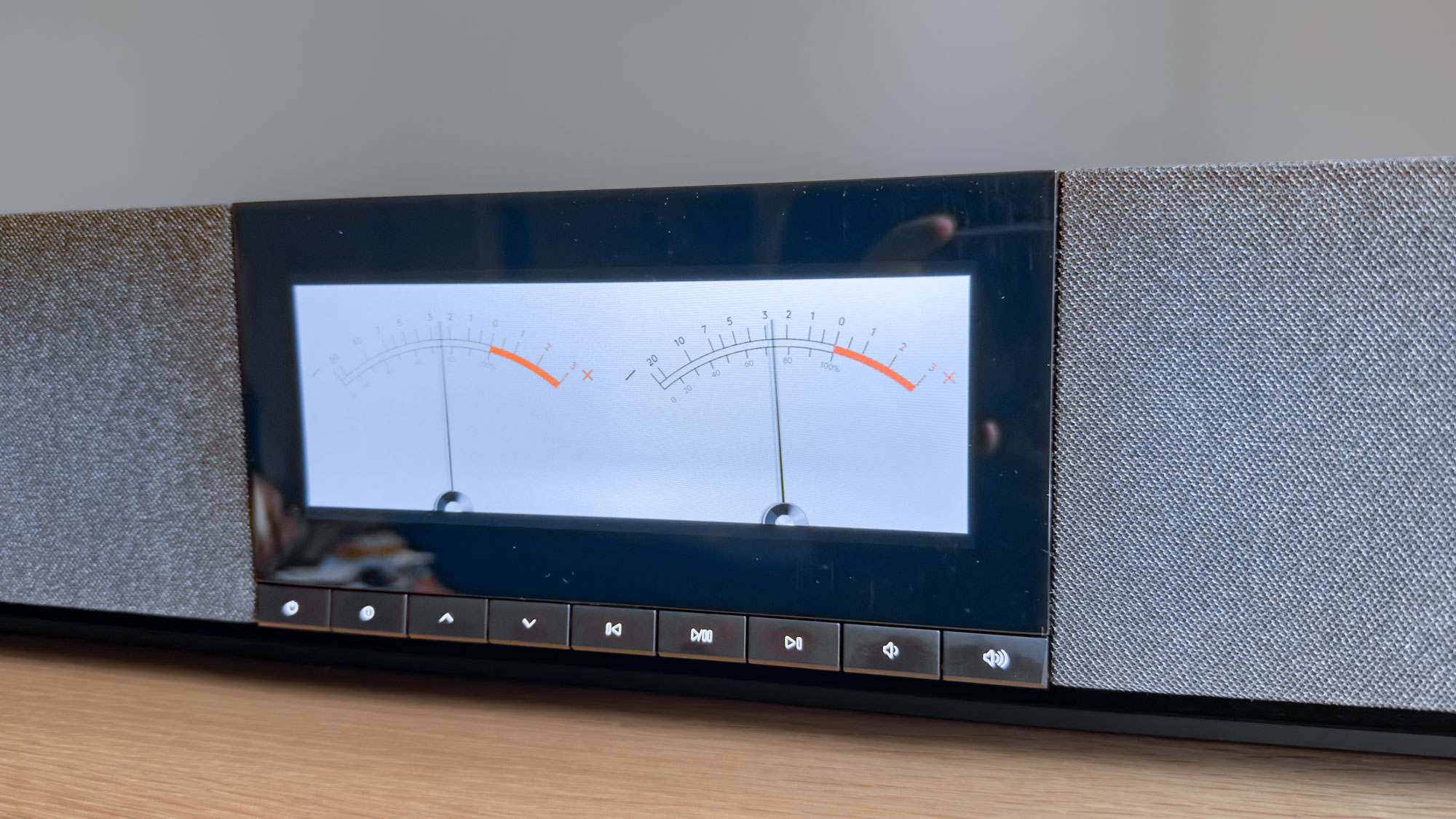
My previous speakers were no slouch. While they’re not quite as potent as the Kef LS50 Metas that hold court in my listening room, they are still some excellent-sounding powered speakers.
The Cambridge Audio Evo One absolutely blows them out of the water.
Upon first connection to Tidal and playing Arch Enemy’s Nemesis, the hit of the kick drum reverberated around my body. Taken aback, I sat down to get really engaged. The twin guitar solos soared like I hadn’t heard from similar devices. The distorted rhythm guitar was perfectly crunchy, yet effortlessly defined. Cymbals crashed, snares biting in their ferocity. Angela Gossow’s signature, terrifying growl dominated the room for the whole listening session.
There are 14 drivers behind its fabric grille, with 700W of power driving the show.
Aghast, I took a moment. Surely not. It’s not that big, how could it fill the room so well? It’s thanks to the sheer number of drivers that Cambridge Audio has packed in, along with its excellent sound profile tuning. There are 14 drivers behind its fabric grille, with 700W of power driving the show. To put it in perspective my (still excellent) Sonos Era 300 is 200W, and your average Bluetooth speaker is generally around 15-30W. The Evo One oozes power from its walnut-coated pores.
“There’s no way it can do that again”, I thought to myself. Chet Baker’s Always You will trip it up. I couldn’t have been more wrong. There were elements to the drum line that you’d only hear in more expensive setups. A surprising restraint made the piano smooth and pleasant. You could almost hear the breath going into the trumpet, each not clear and well-defined. The double bass bounced with buoyancy, all the while Chet crooning over the top with signature swagger. I closed my eyes, and I was there. I was with Chet in the recording studio.
The rest of my initial listening session decided the fate of the rest of the speakers in my living room. The Sonos Era has taken pride of place in my bedroom, the soundbar has gone in a box, and my floor standers await final judgment. There’s a new speaker in town, and it takes up no more than a small cabinet
Is there anything wrong with it?
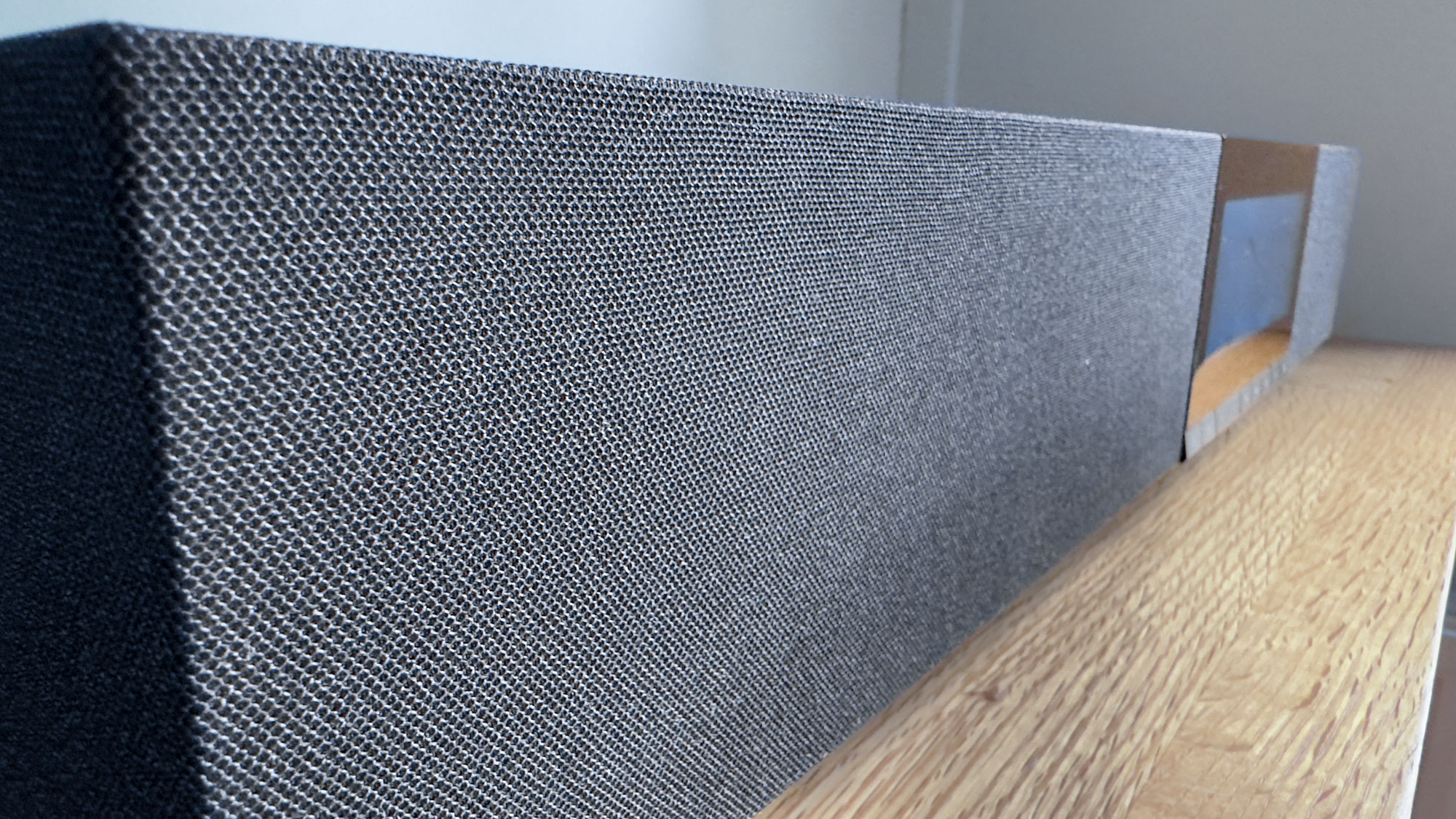
The Evo One isn’t perfect, of course. It’s heavy, so you won’t want to move it around too much. My advice is to find its home, put it there, and leave it there. Its sound profile is weighted to be slightly warmer than some might like, although I found it made for a more engaging and energetic listen.
The biggest drawback is the price — at $1,499 (£1,299 in the UK) it is extremely expensive, and while it reduces the overall price of audio equipment in my living room, it might not do the same in yours.
The biggest drawback is the price — at $1,499 (£1,299 in the UK) it is extremely expensive, and while it reduces the overall price of audio equipment in my living room, it might not do the same in yours. It’s well worth the price if you’ve got the dollars to afford it, but it’s still a lot of money to ask for a speaker unit.
That being said, I genuinely feel like this one of the few all-in-one speaker systems worth buying, as it provides the sound quality I’d expect from a multi-channel bespoke system with easy-to-use controls that are often not provided.
It has earned a spot in my living room for years to come and while I might need to occasionally take it offline to test another speaker or soundbar — that is part of my job, after all — it’s the system I’ll return to time and time again.
More from Tom's Guide

Tammy and her generous collection of headphones have found a new home — Tom's Guide! After a two-and-a-half-year stint as iMore's resident audiophile, Tammy's reviews and buying guide expertise have more focus than ever on Tom's Guide, helping buyers find the audio gear that works best for them. Tammy has worked with some of the most desirable audio brands on the planet in her time writing about headphones, speakers, and more, bringing a consumer focussed approach to critique and buying advice. Away from her desk, you'll probably find her in the countryside writing (extremely bad) poetry, or putting her screenwriting Masters to good use creating screenplays that'll never see the light of day.
